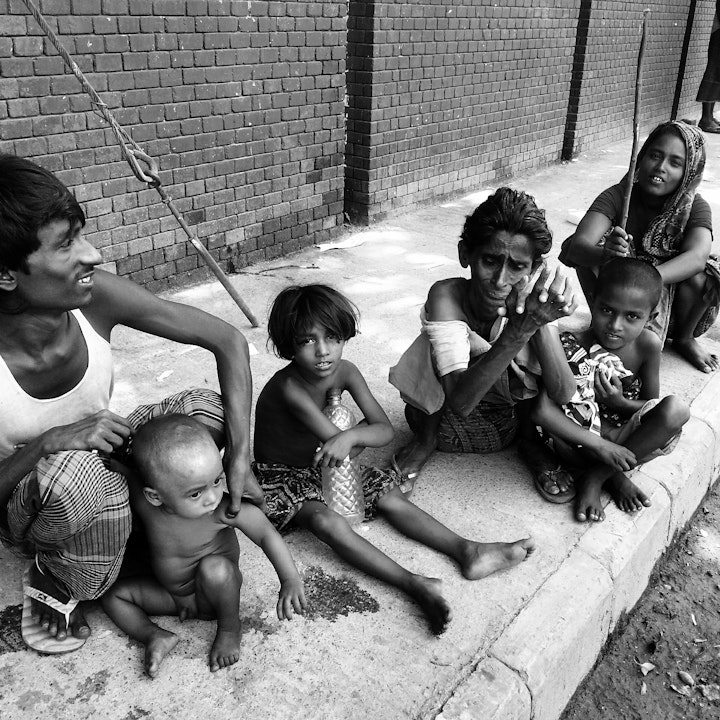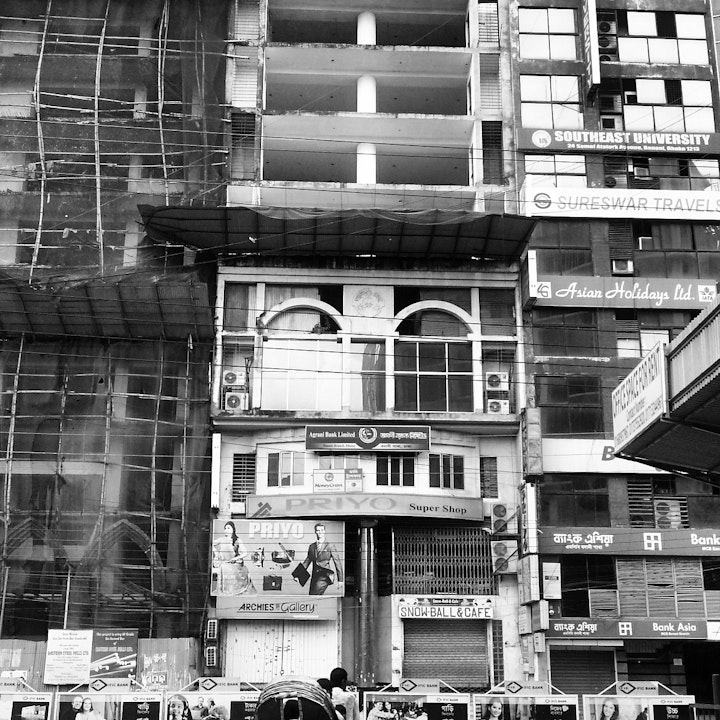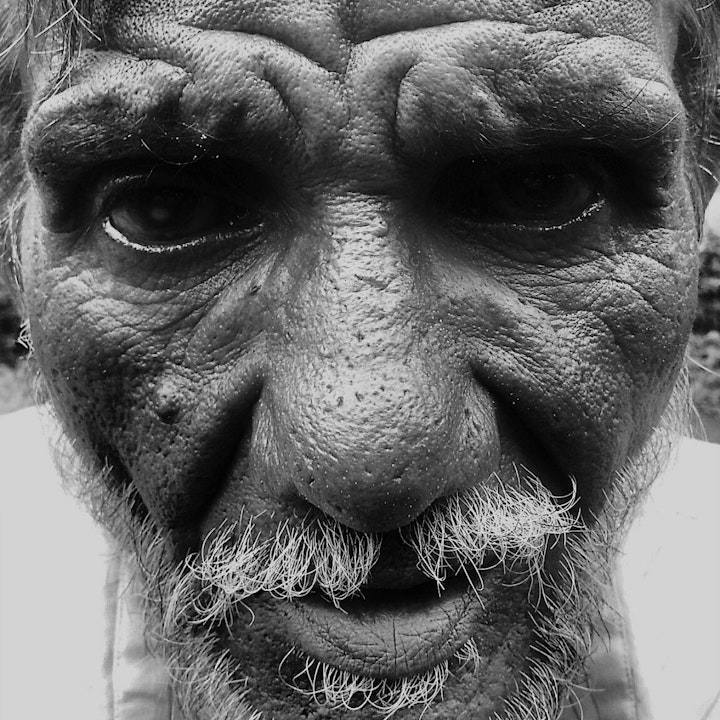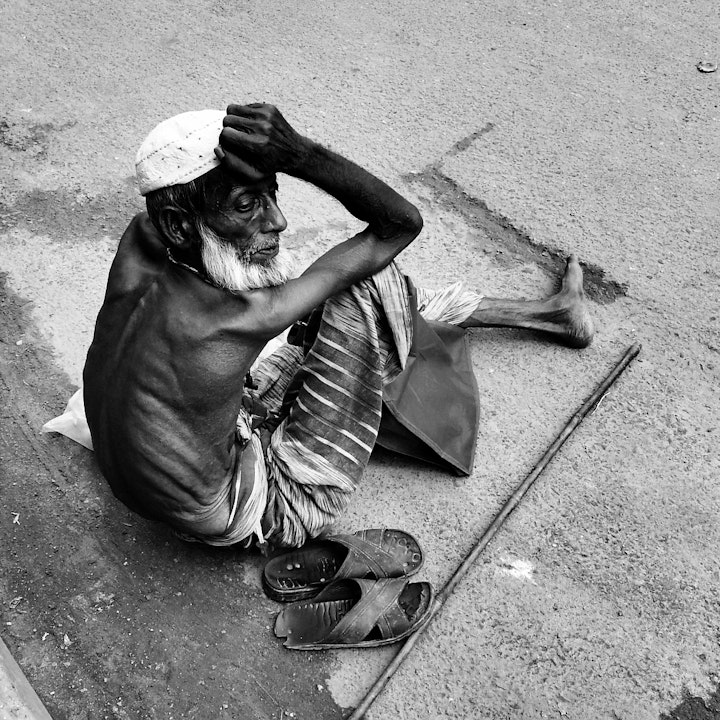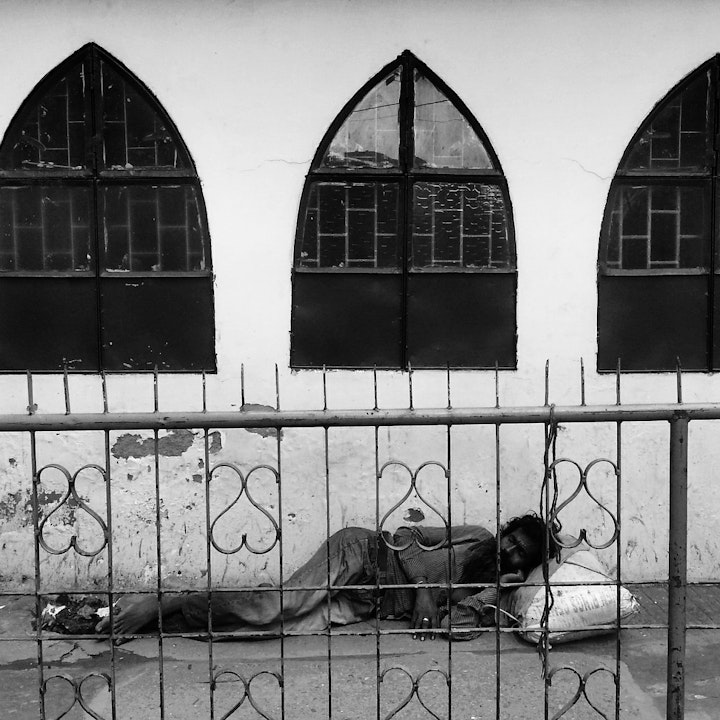Invisibility and Poverty
Invisible Beggars
(written 2013)
I rent an apartment on Road No 23 in Banani. It is a smart place. The 10-storey building is equipped with what they call “full generator back up,” meaning that in the frequent Dhaka power shortages, I will not experience any interruption in the operation of my air conditioners and fans etc. My building is next to a superbly stylish building owned by a television boss. It is without doubt a wealthy road. Yet I live side by side with people who are in abject poverty, and who live on the pavements beneath my flat. Most of these people are members of the “floating population” or “street dwellers” as they are called in Bangladesh. They beg on the streets.
Beggars are everywhere in Dhaka and yet their “invisibility” is quite astonishing. This invisibility manifests itself in many ways. It includes everything from contempt for them to religious injunctions against begging to middle-class chatter about how beggars are mainly fakes and that they are nothing but professional rogues. There is never that understanding , that awful and amazing truth, that had things gone differently, that beggar could have been been any of us.
Certainly successive governments have tried to make them invisible. The former military dictator Ershad created a village for them in Tongi. Of course the entire scheme was soon unworkable. Just over four years ago in 2009 the Awami League government claimed that they would rigorously enforce the ban on begging so as to make Bangladesh beggar-free within 5 years. As of today, there are 9 months left and only about 700,000 beggars in Dhaka to deal with…
Invisibility is also a recurrent theme when it comes to earmarked government funding for beggar rehabilitation. In October of 2012 press reports claimed that public money allocated for rehabilitation of beggars was misappropriated. Some Tk 70 million was available for this…..and needless to say there has been no sign of decrease in numbers. Only the money presumably decreased and then became invisible.
The law enforcement agencies also periodically like to make beggars invisible. Before the 2005 SAARC summit and again before the ICC World Cup (WC) Cricket in 2011 the government took steps to remove beggars from the streets of Dhaka and Chittagong cities where the matches took place. How long did those cosmetic measures last? Not long. People can’t simply become invisible. There are many reasons why there are people on the streets eking out a miserable existence. These reasons are not nebulous or sketchy. They are well researched and are being researched. The government knows about them. It is high time the rhetoric around the issue of begging changed direction.
I took these pictures with a Samsung Galaxy Note 2 phone. I used the Camera 360 app on a black and white setting. Any processing was done in-phone. I did not want to use my DSLR as I felt a “proper” camera was too obtrusive and would get in the way. I thought it was worth the sacrifice in quality to be at least be able to to speak to my subjects and not be identified as a journalist bent on getting a sellable image.





